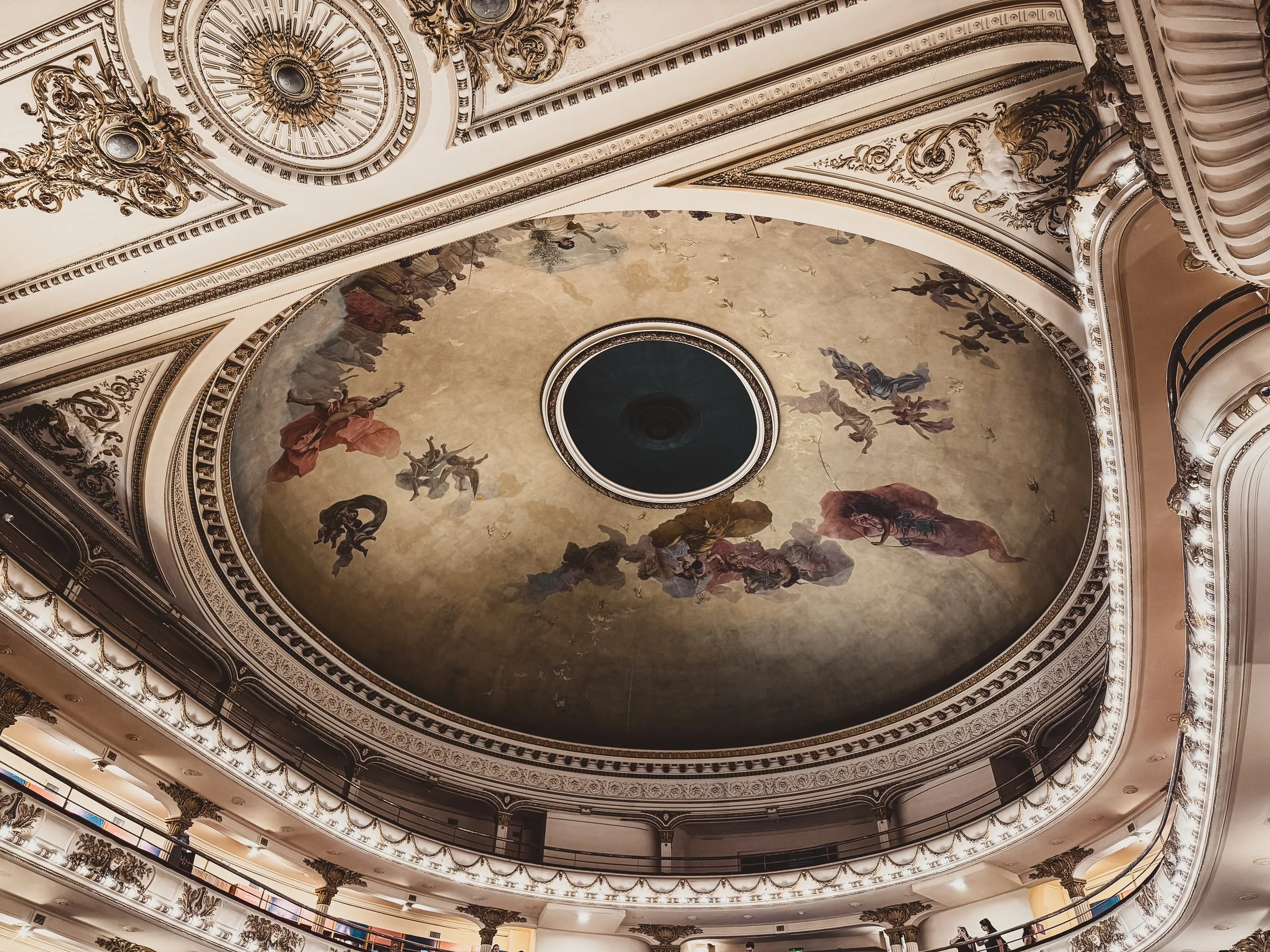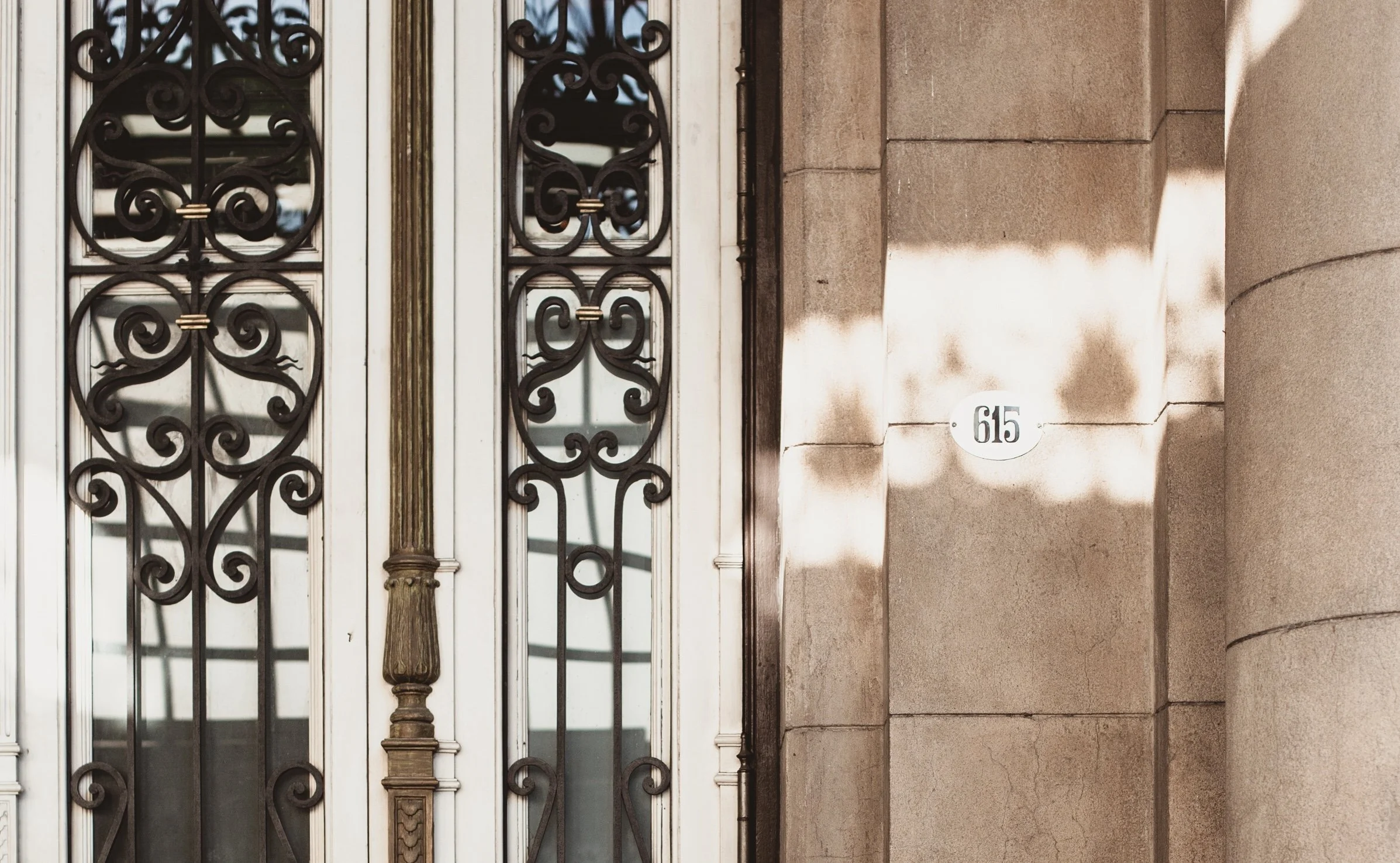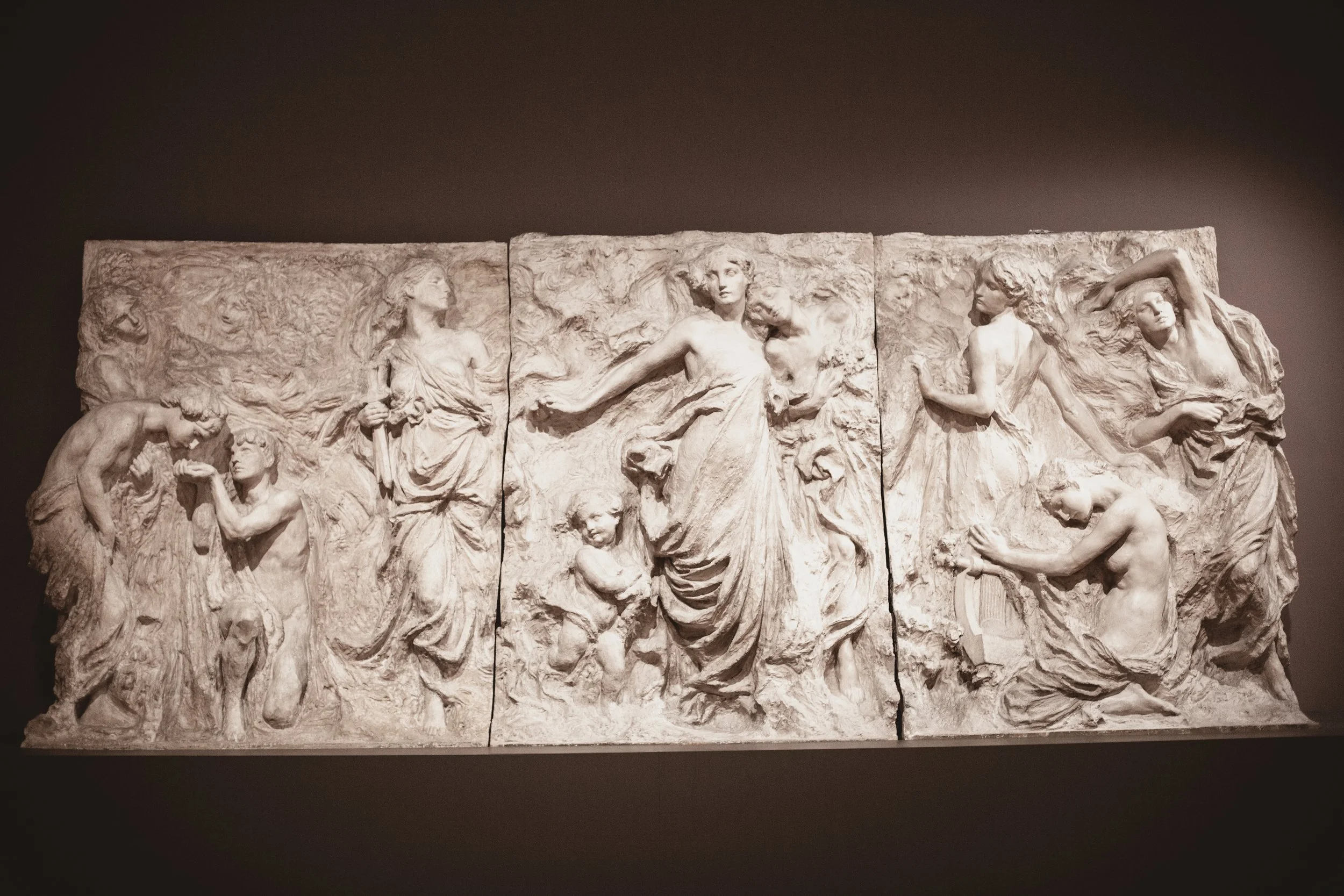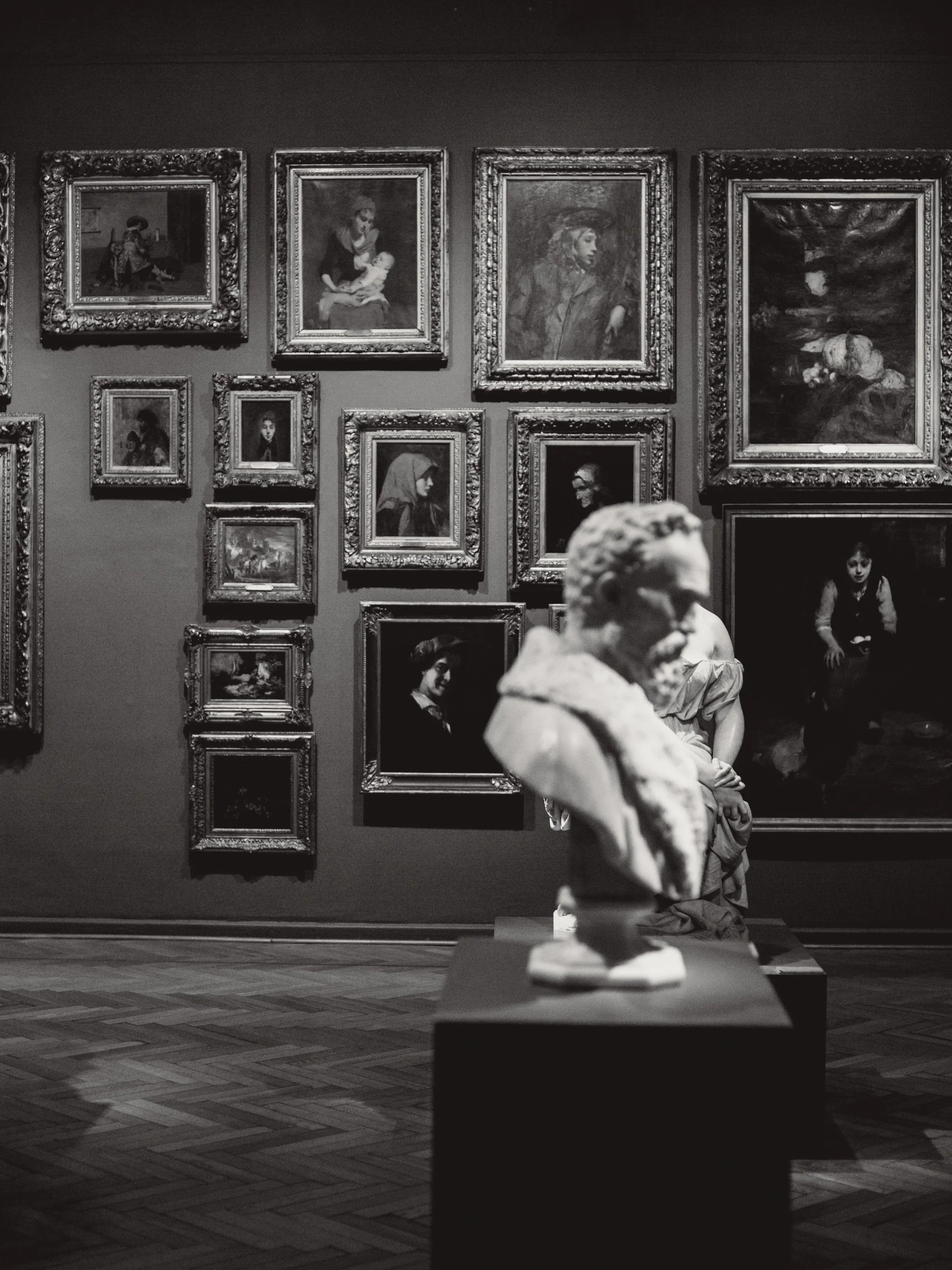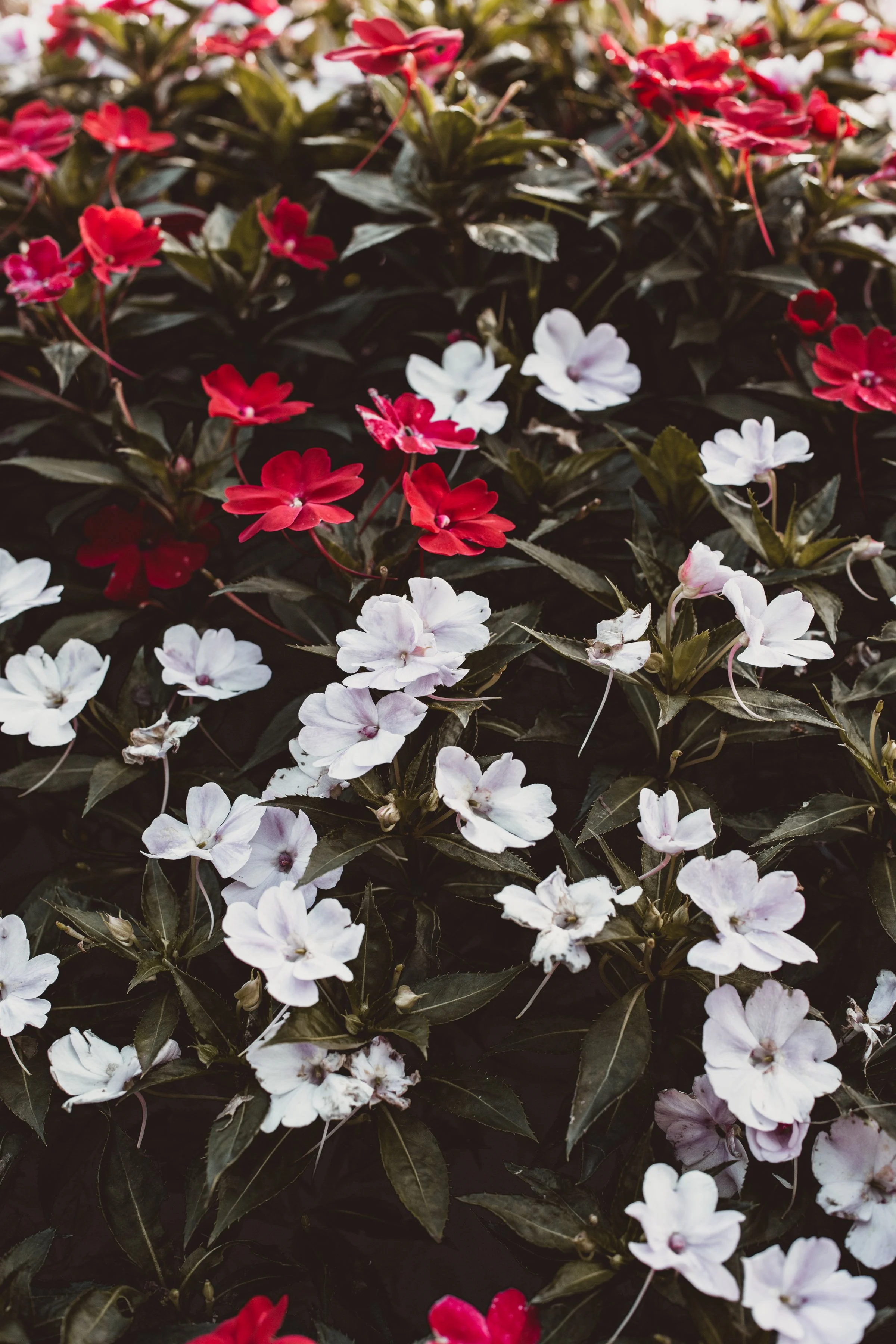ADVENTURES IN BUENOS AIRES | PART ONE
El Ateneo Grand Splendid
One of the first places I wanted to visit after arriving in Buenos Aires was the famous bookshop set in an old theater. Initially built in 1919 as the Teatro Gran Splendid, it was converted into a bookshop and later became the location of the El Ateneo publishing house at the turn of the century. Over a million people visit the old theater annually, many to purchase books, but mostly to appreciate the beautiful Italian frescoes and the historic space.
The bookstore is breathtaking when you step inside and look up to see the painted dome ceiling. I visited every level, attempting to view the old theater from every angle to fully appreciate the beauty of the fusion of art, architecture, history, and literature. The experience was lovely; a second visit was necessary to relive the moment of entering the building and being overwhelmed by the building's enchantment. I was one of many who tried to take photos at the right angle and at the right level to capture the whole essence of the view.
El Teatro Colón de Buenos Aires
I was hoping to step inside the famous theater and even see a show. Alas, none of the shows on the schedule would have been suitable for my kids, so we contented ourselves with a walk around the square and a nearby park. At the end of March, Argentina was experiencing the waning days of summer, bright with sunshine and heat. The shadows that played along the theater walls were stunning. The city’s architecture drew a lot of inspiration from Europe, which I greatly enjoyed, taking photos of the building's details.
TANGO SHOW
A trip to Argentina would not have been complete without attending a tango show. I used Viator and found Tango Porteño, which conveniently offered a shuttle service that drove us to and from the theater and provided vegetarian and gluten-free meals, which were necessary for my family and me. I was in awe of the grand theater, with its bright lights outside and the size of the interior. The floor was laid out with numerous tables set up in a family-style arrangement. To my delight, we were seated at one of the two tables closest to the center and front of the stage. My children had a front-row seat to the show.
The tango show was, without a doubt, the best part of the trip. Yes, it seemed a bit touristy, but wow! The dancers were incredible, the singer was phenomenal, and the band was remarkable. I was taking photos and videos, and then at one point, I forgot to capture the moment, lost myself in the music and the dancing, and was swept away by the fantastic performances. A highlight came when a young woman and two gentlemen were a trio, stepping and dancing. Twice, the young woman waved and smiled at my daughter, who stared wide-eyed and mesmerized. It was a remarkable night! One I will never forget.
Museo Nacional de Bellas Artes
THE POWER OF ART
NUDES
I had seen the banners showcasing the works of famous artists on nudes, recognizing both the artistry of the brush and the beauty of the human figure. My children have visited many art museums, so a woman depicted without clothing in an art piece would not faze them. However, I had two startling revelations while I studied the works of Ganguin, Manet, Lefebvre, Degas, and Sívori. First, it was wonderful to witness the female form in all its curves, roundness, and authenticity. Growing up in the “Heroine Chic” era, when 100 lbs and no sign of hips were the fashion for women, I struggled with the image of beauty and how my hourglass shape did not fit the trend. However, with art, there is a genuine realism—a more accurate depiction of the female form—that is more relatable and still considered beautiful.
The second revelation was my embarrassment about walking around the museum with my father nearby. I felt a youthful awkwardness as we passed a wall of nudes. The environment was not one I remembered from my childhood, and I wondered if experiences at an art museum would have taught me the beauty of the natural human form. I thought of my negative body image, and then looked at my children, who admired the paintings without a second thought. I marveled at how comfortable they were with art, especially representations of the human figures, which portrayed many examples of female beauty. I dearly hope that exposure to art will prevent my daughter from carrying a negative body image like the one I have had my whole life.
SYMBOLISM
One of the last pieces of art I witnessed was of Christ crucified on a US bomber plane. I was so transfixed by the bold symbolism of the artist that I researched the artwork upon returning home. León Ferrari's piece, titled "La Civilización Occidental y Cristiana " (Western Christian Civilization), was created in 1965 and represented his anti-war views. Even more so, Ferrari sought to critique the use of Christian language to support imperial power. He also voiced his concern about the unsettling relationship between the Church and the military, and how Christian leaders who should have been preaching peace were provoking violence.
I could imagine absolute outrage from American Christians seeing what would be considered an abomination and a sacrilegious art piece that they would believe should be censored. However, what I love about art is the emotions it evokes and the message it conveys. I saw this piece and recognized my own country's failings both in church and state. The unbelievable confidence in strength and might, along with pinning our faith not on Christ the redeemer, but on military power, economic wealth, and global influence. There is a verse. Psalm 20:7 reads, "Some trust in chariots and some in horses, but we trust in the name of the LORD our God.” It is not too hard to modernize this verse and think of the US as a country that trusts in Wall Street and the economy, or trusts in politicians and the White House. In an art museum in South America, I witnessed art that brought to life the terrible reality of the true faith of my home country in a not-so-subtle form.
CHRISTIAN ART REPRESENTATION
Something that caught my eye was a depiction of Christ at the moment of his death. He is surrounded by angels, with white wings, but Christ is noticeably tanner than his angelic counterparts. It was the first depiction I had seen of Christ as a man closer in resemblance and coloring to myself. I was startled at how much the piece moved me and stirred excitement at seeing Christ depicted, more or less, with a Hispanic appearance. It reminded me of the importance of representation and the need for people to see themselves reflected in both art and faith.
El Jardín Japonés
Book and Flower Markets
During a taxi ride back to my hotel, I caught sight of a bus station where numbered bookstalls were lined up on the platform. Determined to visit the urban book market, I walked to the strip after visiting the Japanese garden and was mesmerized by the collections. There were dozens of stands, each carrying a mix of used and new books, mainly in Spanish but also featuring a significant number in English. I am slowly collecting classic books in Spanish, but as expected, the classics can be hard to find in any language. I found a couple of books, something to bring back home, and remind me of the book market.
Another common sight in the city was the numerous plants that blanketed the many balconies throughout the city. Buenos Aires is already naturally green, but the addition of potted, hanging, and stacked household plants on every street increased the image of a city engulfed in greenery. Before I could wonder how people gathered so many plants, I saw a stand on a street corner, and instead of cheap souvenirs or magazines, it was full of plants. The idea of a plant stall in the middle of the city seemed too incredible to be commonplace. But throughout my visit, I saw numerous stalls overflowing with pothos and spider plants, along with bouquets of flowers and buckets of eucalyptus. I only wish something like this would exist back home, with stalls throughout the city encouraging people to buy more plants that would help clean the air and add more greenery to the landscape.



